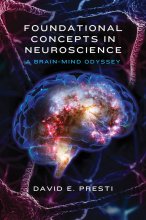
25 Jun What Causes Seizures?
A variety of different things may happen as a result of a seizure, depending upon the region of the brain that is affected. There may be sudden changes in sensory perception, such as visual disturbances or the smell of an unusual odor. There may be rapid and inexplicable emotional or cognitive changes. There are often involuntary muscle movements, and sometimes even complete loss of control over the movement of one’s body. Obviously, this could lead to serious consequences if someone has a seizure while, for example, driving a car. Amnesia, or memory loss, frequently accompanies the experience of a seizure. Severe seizures can produce a loss of consciousness and even death. Too much excitation is not a good thing.
Sometimes seizures are associated with particular identifiable causes. A tumor – an abnormal growth of cells in the brain – may disrupt neural circuitry, producing unbalanced excitation. New onset of seizures in an adult is always reason to check for the existence of a brain tumor. Brain infections and high fevers may trigger seizures. Traumatic physical injury to the head, such as from a car or bicycle accident, may disrupt the neural connectivity in such a way that seizures are a result. Drugs that increase brain neuronal excitability have the potential to produce seizures. Some drugs that produce the opposite effect of stimulants, inhibiting neural activity in the brain, can also increase the risk for seizures if these drugs are used regularly and then abruptly stopped. Examples of such drugs are alcohol and other sedative-hypnotics.
Most seizures, however, have not been associated with any identified causes. These are called idiopathic seizures. Idiopathic is a word widely used in medicine. It means that the condition arises from an obscure or unknown cause. The roots are from the Greek idios, meaning personal, private, separate, and pathos, meaning suffering.
Idiopathic seizures may appear spontaneously at any point in life, although they most often first appear in childhood. There are genetic and developmental components to idiopathic seizures, although these remain still largely uncharacterized. Certain configurations of neural connectivity arising during the wiring of the brain early in life can apparently increase the risk of occurrence of unbalanced runaway neural excitation, and thus of seizure.
Susceptible persons may develop idiopathic seizures without any precipitating factors. However, these seizures may be triggered in a variety of identified ways. Intense sensory stimuli, especially of a strongly rhythmic nature – such as brightly flashing strobe lights or other flashing visual displays – can set up powerful rhythmic neural activity in sensory regions of the brain that may lead to the explosive runaway activity of a seizure. Other possible triggering factors include sleep deprivation, stress, physical trauma to the head, stimulant drug use, and withdrawal from sedative-hypnotic drugs.
David E. Presti is a neurobiologist, psychologist, and cognitive scientist at the University of California, Berkeley, where he has taught since 1991. He holds doctorates in molecular biology and biophysics from the California Institute of Technology and in clinical psychology from the University of Oregon.
This article was reprinted by Project CBD with permission. It may not be reproduced in any form without approval from the source.


Sorry, the comment form is closed at this time.